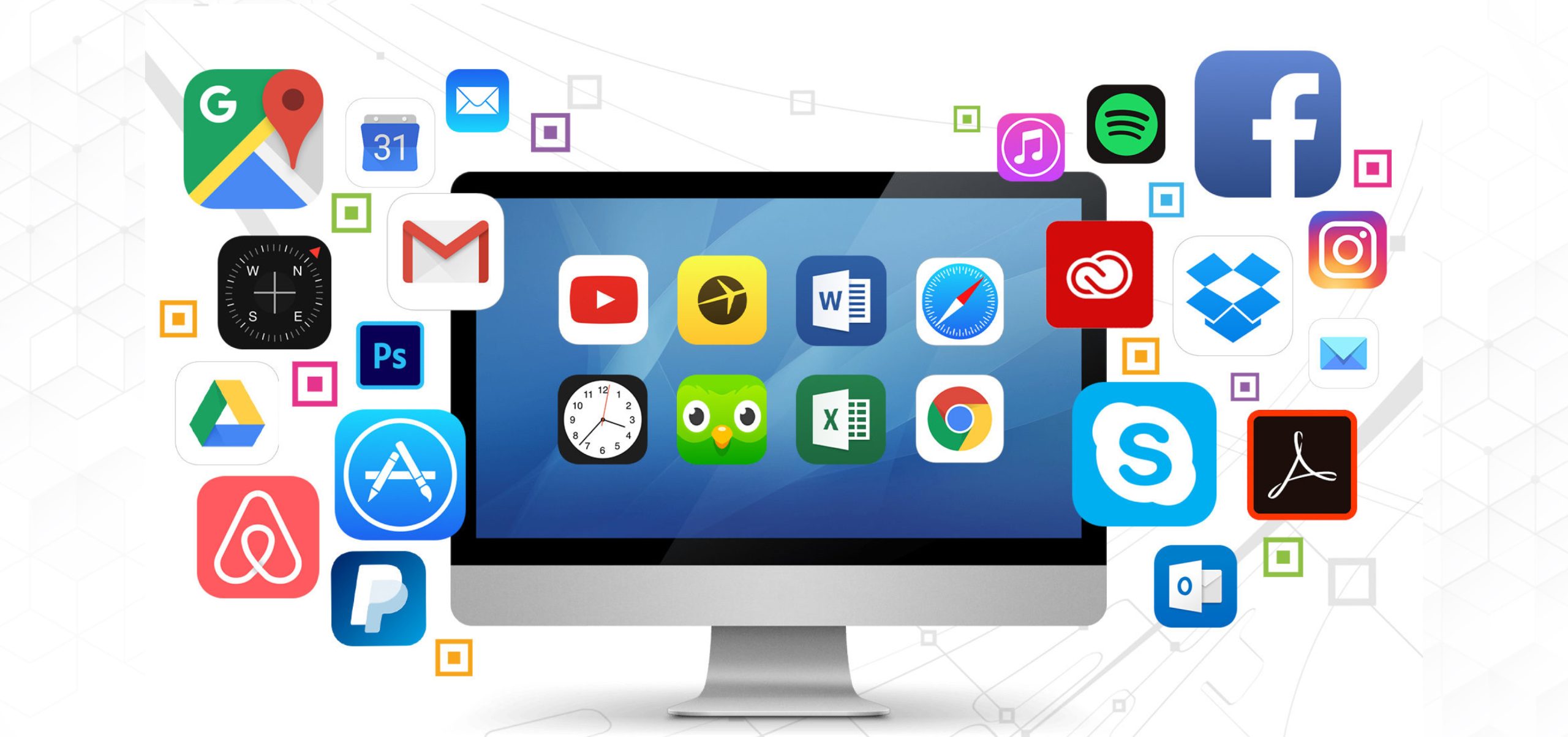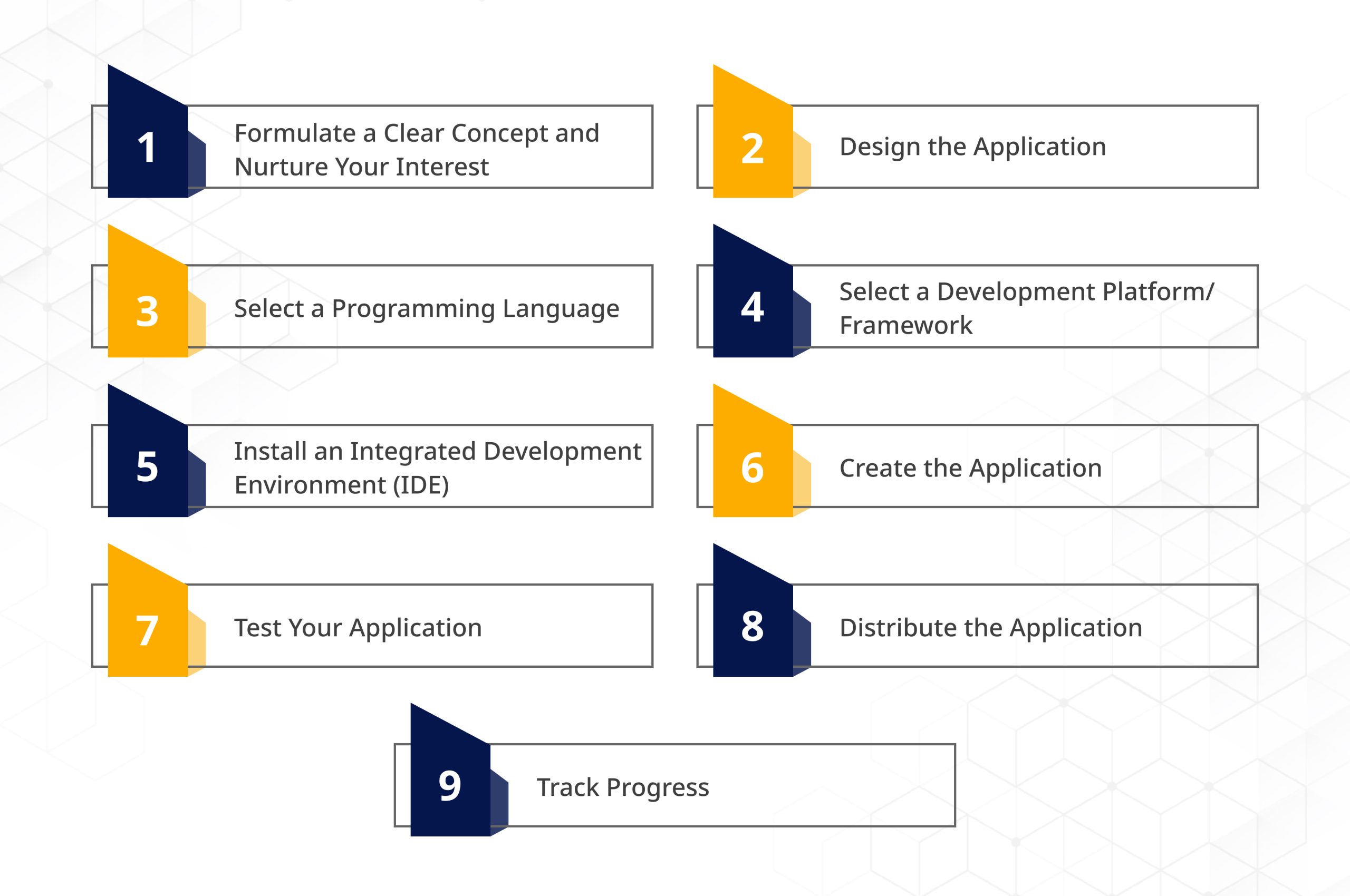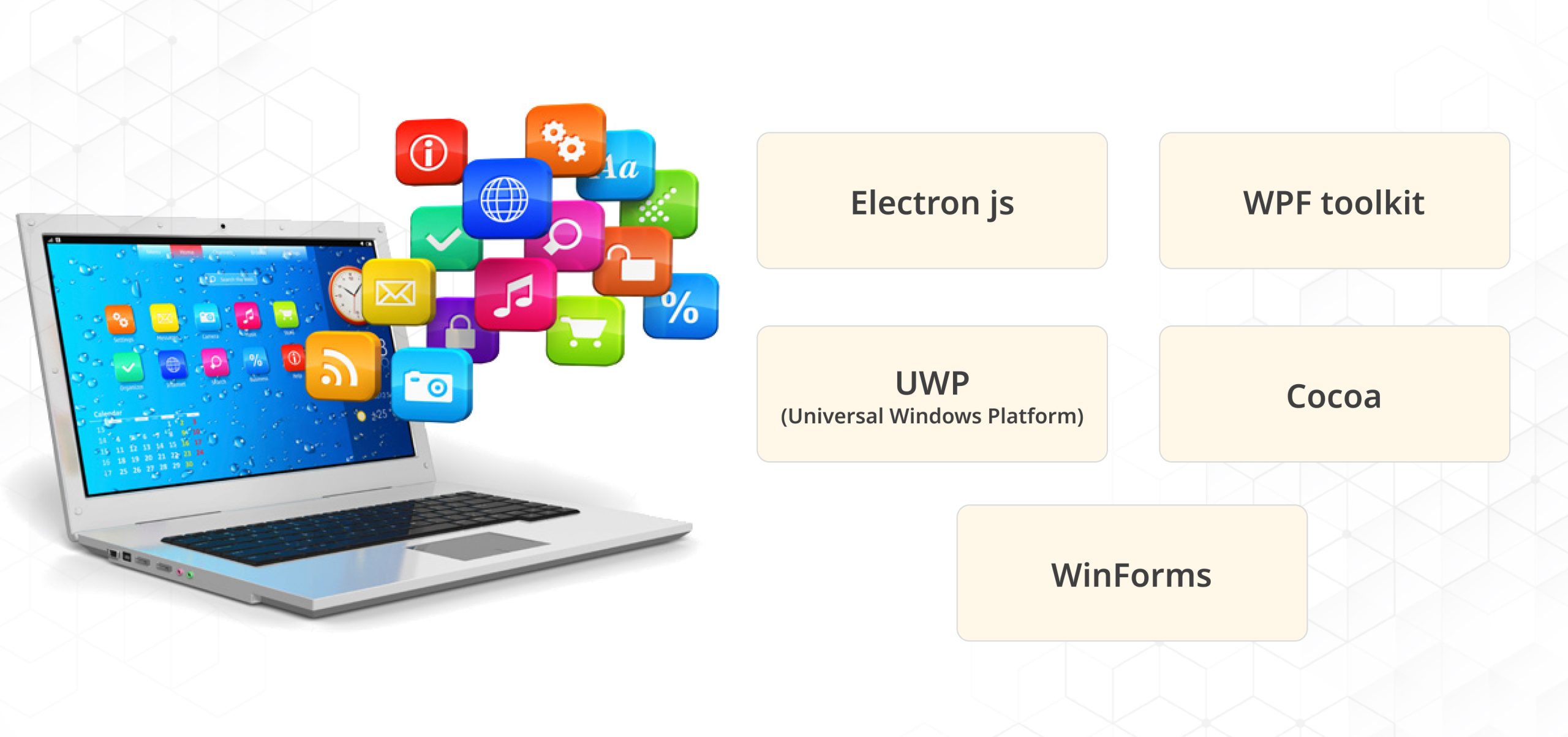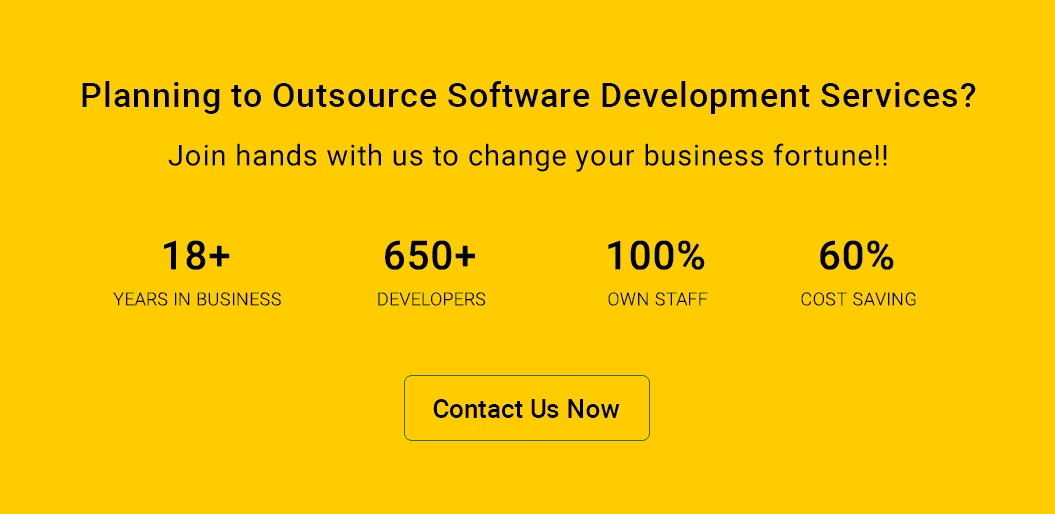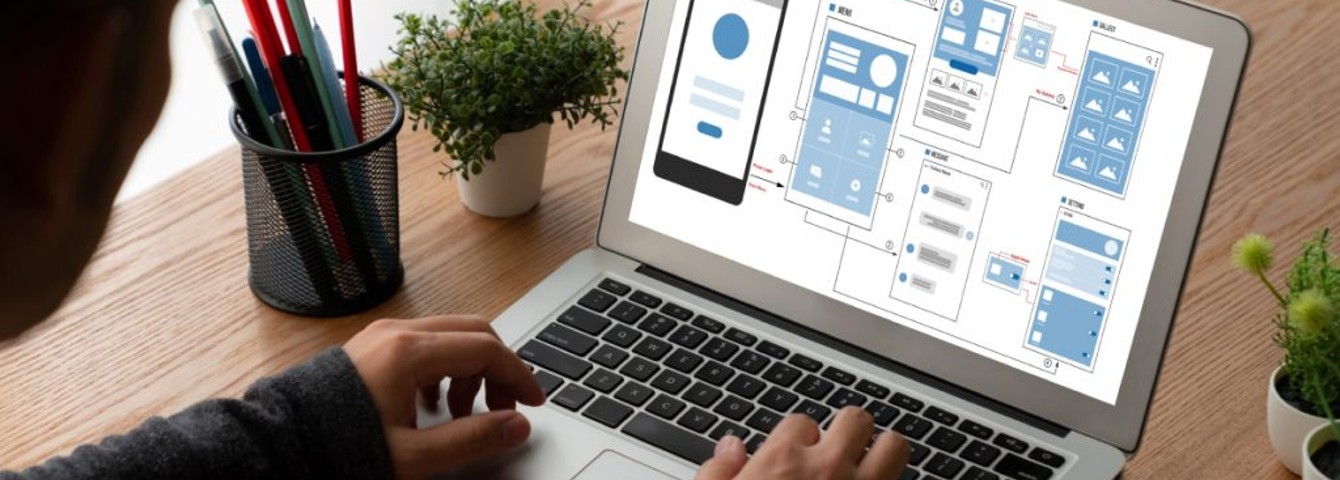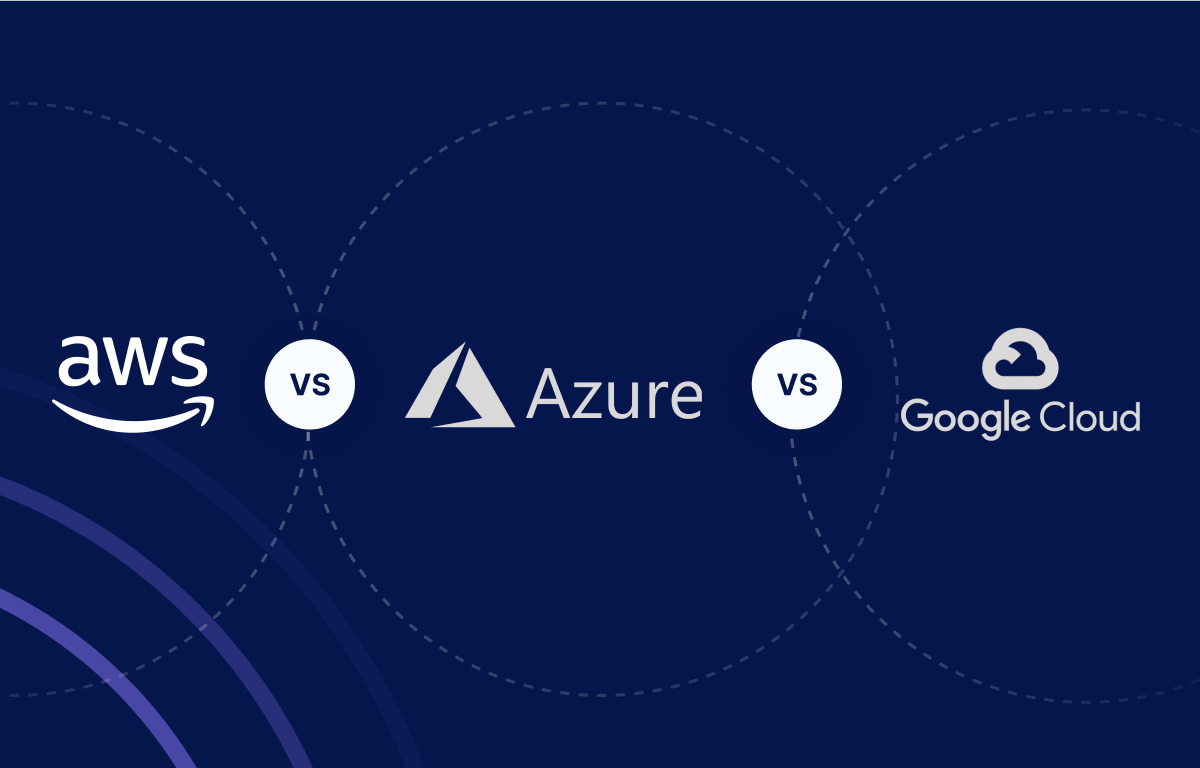In today’s fast-paced business landscape, providing a remarkable experience for managers and fortifying your data against potential breaches is paramount. That’s where the prowess of desktop application development shines through.
Are you seeking an enriched experience for your business managers? Do you yearn to safeguard your precious data against the ever-looming threats of cyberattacks and breaches? Look no further, as a desktop application could be your ultimate solution.
In this digital age, desktop software development is essential for business growth. The days of manual workflow management are long past, and the path to business optimization lies in the modernization of your desktop applications.
With desktop application development, you’re not merely upgrading your business; you’re fortifying it against cyber threats, enhancing its functionality with interactive controls, boosting performance, and maintaining cost-effectiveness.
Who wouldn’t want their business to run flawlessly, right? If you’re nodding in agreement, then delve into desktop enterprise software development services. This blog is your gateway to exploring the intricacies of the process, discovering the best frameworks, and understanding how desktop apps differ from their web-based counterparts.
Let’s embark on this exciting journey of empowerment through desktop application development. Your business’s transformation begins here!
What is Desktop Application?
A desktop application is a computer program specifically designed to run on desktop systems, utilizing the host computer’s resources to carry out its functions. These applications operate on popular operating systems, including macOS, Linux, and Microsoft Windows.
Key characteristics of desktop applications:
Desktop applications are installed directly on the user’s computer, allowing them to run without an internet connection. They can be accessed through the GUI or a terminal window, often by simply double-clicking their icon to open the main window.
Discover how ValueCoders expert desktop app development services.
Examples of desktop applications include:
- Microsoft Office Applications
- Adobe Photoshop
- Skype
- Illustrator
- Discord
- Slack
What is Desktop Application Development?
Desktop application development involves creating custom software development services tailored to desktop and laptop computers. These applications are developed for major operating systems like Linux, Microsoft Windows, and macOS.
Key points about desktop application development:
- Local Functionality: Desktop applications are not dependent on internet connectivity and can be fully functional offline.
- Diverse Languages: Developers utilize various programming languages, including JavaScript, HTML, CSS, SQL, Python, TypeScript, Node.js, Java, C#, C++, Bash, PHP, Swift, Red, Go, and more to create desktop applications.
In essence, custom desktop application development empowers users with offline-ready, feature-rich software seamlessly integrating with their desktop environment.
Major Differences Between a Desktop, Mobile, and Web Application
When considering the distinctions between desktop applications, mobile applications, and web applications, several key differences come to light:
Difference between a desktop application and a mobile application:
- A desktop application operates on stationary machines like desktop computers and laptops.
- In contrast, a mobile application is purpose-built to run on mobile devices, for example, tablets and smartphones.
- Although akin to computers in many ways, mobile devices come with certain constraints, particularly related to connectivity and storage.
Difference between a desktop application and a web application:
- The desktop application is a software program installed and run locally on computer devices like desktops and laptops.
- On the other hand, a web application is accessed over the internet and delivered from a remote server to a local device.
- This distinction is crucial for understanding the dynamics between desktop and web applications.
Each type of application offers unique advantages and is best suited for specific use cases. While the omnipresence of the internet is shaping the future, desktop applications, mobile applications, and web applications will continue to coexist, serving distinct niches.
Let’s now explore another essential facet of the digital landscape.
Top Reasons to Choose Desktop Applications
Let’s delve into the compelling reasons why opting for desktop applications can be a game-changer for your business:
Network Independency
- Desktop apps operate seamlessly without reliance on a stable internet connection.
- Online apps can disrupt employee productivity and hinder access to critical business data during internet outages.
Safety and Confidentiality
- Online apps are more susceptible to security breaches and hacking.
- Desktop application development offers a secure environment for safeguarding vital business information.
Easier User Control
- Desktop applications provide users with complete control and flexibility.
- Customizing and managing desktop apps is simpler and more convenient than online applications.
Better Compatibility
- Desktop applications are versatile, functioning on various operating systems and browsers with minimal code adjustments.
- Adaptability to changing business needs without altering the core code makes desktop apps attractive among software product development services.
Less Stringent Hardware Requirements
- Desktop apps operate independently, reducing memory and storage demands compared to web-based apps.
- Critical applications, such as trading and financial software, benefit from the speed and efficiency of desktop applications.
Selecting the right technology is paramount to harness the advantages of desktop application development. One standout choice is .NET, the preferred technology for custom application development services. Discover why .NET leads and gain valuable insights into this cutting-edge technology.
Learn how ValueCoders can help your brand thrive with cutting-edge desktop app solutions.
Explore the power of desktop applications and elevate your business to new heights!
Steps for Developing Desktop Applications
Embarking on the journey of creating desktop applications can be both thrilling and challenging. If you’ve been scouring the web for guidance on creating desktop apps, you’re in the right place. Here are the essential steps to get you started:
1. Formulate a Clear Concept and Nurture Your Interest
Developing desktop applications can be a rollercoaster ride, with occasional hurdles and setbacks. It’s crucial to approach this endeavor with passion and unwavering interest, especially when faced with programming challenges.
Take the time to define your motivations and objectives for creating desktop applications. Understanding why you’re embarking on this journey will help you shape your app ideas and set specific goals. Clarity in your purpose can be a compass for your career and personal growth in application development.
2. Design the Application
Once you’ve defined your goals, the next step is to delve into the world of desktop app design. This crucial phase demands a clear understanding of your app’s purpose, target audience, and how it will be used. It’s about bridging the gap between what your app needs to achieve and how it can be brought to life.
Design is the cornerstone upon which you build your app’s concept and gain insights into its functionality. Jumping into coding with a well-thought-out design is a recipe for wasted time, as you may need to create the right elements.
Fixing issues post-coding often consumes more time than preemptively addressing them during the design phase. Therefore, meticulous planning is essential before you embark on app development.
Explore a variety of tools to create designs and mockups for your desktop application. Here are a few notable options:
- Moqups: An excellent tool for crafting mockups, prototypes, and frameworks. Moqups facilitates the visualization and validation of your app ideas, providing a collaborative environment for idea-sharing within your team.
- Mockplus: When you hire developers, this cloud-based tool empowers them to construct interactive prototypes and wireframes. It streamlines screen design with pre-built components, icons, and drag-and-drop functionality.
- Adobe XD: Widely used by designers, this tool supports collaboration from ideation and wireframing to developer handoff. Adobe XD is ideal for creating website, app, and game designs.
- Mockingbird: A user-friendly software for building prototypes and wireframes featuring a drag-and-drop editor that simplifies the design process.
When designing your desktop application, keep the following considerations in mind:
- Function: Ensure the design effectively highlights how the application functions and emphasizes key features.
- Usability: Analyze how your app assists users in achieving their specific goals. A user-friendly interface that can enhance the overall user experience.
- Responsiveness: Given the array of device screen sizes today, your application must be responsive and support various display types.
Your design is the blueprint for your desktop application’s success. Craft it carefully, as it lays the foundation for a functional and user-friendly experience.
3. Select a Programming Language
When programming your desktop application, the choice of programming language is pivotal. The expert software consulting services are key to bringing your vision to life. Here’s a brief overview of popular desktop app frameworks:
JavaScript (JS): A versatile and widely used language suitable for both front-end and back-end development. It’s known for its ease of use and compatibility with various environments.
Features of JavaScript:
- Enables client-side validation for accurate form submissions.
- Platform-independent, running on any device regardless of the operating system.
Also read: TOP JavaScript Frameworks
HTML/CSS: HTML (Hypertext Markup Language) provides the structural foundation for web pages, while CSS (Cascading Style Sheets) adds visual and layout elements.
Features of HTML:
- User-friendly with tag annotations for scripting.
- Utilizes SessionStorage and LocalStorage for client-side data storage.
Features of CSS:
- Allows for CSS custom attributes to customize design.
- Supports content visibility for efficient off-screen component rendering.
SQL (Structured Query Language): Used for database communication and management in relational database management systems.
Features of SQL:
- Supports input parameters and high-level, strongly typed language functions.
Python: An interpreted, object-oriented language known for its code reliability. It’s an excellent choice for desktop application development.
Features of Python:
- User-friendly with a simple, high-level language.
- Facilitates graphical user interface creation with modules like TK, pyQt5, and wxPython.
TypeScript: A Microsoft-developed language widely used for complex web applications.
Features of TypeScript:
- Supports JavaScript libraries and code reuse.
- Compatible with various devices, browsers, and operating systems.
Node.js: A back-end JavaScript runtime environment known for its scalability and efficiency.
Features of Node.js:
- Single-threaded and event-looping architecture for scalability.
- Universally applicable and cross-platform.
Java is a versatile, cross-platform language for desktop and web application development.
Features of Java:
- Clean, simple, and easy-to-use coding style.
- Portability across different platforms.
C# (C Sharp): A multi-paradigm, object-oriented language developed by Microsoft.
Features of C#:
- Combines the power of C++ with productivity similar to Visual Basic.
- Supports data encapsulation, inheritance, interfaces, and polymorphism.
Bash/Shell: A Unix shell and command language designed as a free alternative to Bourne.
Features of Bash/Shell:
- sh-compatible with multi-character parameters and command line usage.
PHP: A server-scripting language for web applications known for its simplicity and versatility.
Features of PHP:
- Easy to learn with a C-like syntax.
- Runs on various platforms and operating systems.
The world of the best language for desktop applications is ever-evolving, each serving unique purposes. To develop a desktop application, familiarize yourself with these languages and choose the one that aligns best with your project.
Consulting a desktop app developer can help you choose the right programming language if you’re a business owner considering a desktop application framework.
ValueCoders craft intuitive desktop applications that empower your brand's productivity.
4. Select a Development Platform/Framework
While it’s possible to create a desktop application by using native tools and languages, this approach can be exceptionally time-consuming. Opting for the right development platform is essential to streamline the process.
A robust platform provides the essential dependencies and tools for crafting a top-tier desktop application. Let’s explore a few leading platforms and frameworks for desktop application development.
5. Install an Integrated Development Environment (IDE)
Once you’ve chosen the ideal framework for desktop application development, the next step is to install an integrated development environment (IDE). An IDE enhances your coding experience, saves time, and helps identify errors in your program’s source code.
Depending on your operating system and chosen development framework, you can easily access and utilize IDEs like XCode, Visual Studio, and more. These tools are your allies in creating efficient and error-free desktop applications.
6. Create the Application
With the first five crucial steps behind you, it’s time to roll up your sleeves and dive into the actual development of your desktop application. As you embark on this journey, keep in mind a few key principles:
- Feature List: A comprehensive list of every feature your application requires to function effectively.
- Incremental Implementation: Instead of attempting to implement everything simultaneously, take a step-by-step approach.
Finish the implementation of one feature before moving on to the next. This method minimizes confusion during development and allows you to track progress effectively.
7. Test Your Application
Once the coding phase is complete, the vital testing phase begins. Thoroughly examine your desktop application, ensuring all features function as intended. To gain valuable insights, consider sharing your app with friends and family for user feedback. Early user experiences can be instrumental in refining your application.
If possible, engage experienced application testers to identify potential issues and provide recommendations for improvement. Their insights can enhance the functionality and user experience of your application.
8. Distribute the Application
Upon completing your application, it’s time to make it accessible to users. If your app targets Windows users, consider the Microsoft Store for distribution. For macOS users, the Apple Store is an ideal platform. Alternatively, you can direct users to download and install your application from the hosting website.
9. Track Progress
Following distribution, monitoring the usage and performance of your application is crucial. Utilize analytical tools such as Azure Monitor to track and optimize your application’s performance.
These are the essential steps explaining how to create a desktop application. Now, let’s explore various types of desktop application development frameworks.
Types of Desktop Application Development Frameworks
Efficient frameworks and toolkits are essential for the seamless development of desktop applications. These frameworks streamline the development process and enhance its efficiency. Let’s explore various desktop app development frameworks:
- Electron js: A user-friendly desktop application framework that facilitates powerful cross-platform app development. To harness its full potential and create native applications, developers need a firm grasp of HTML, CSS, and JavaScript.
- WPF toolkit: This toolkit comprises WPF controls, utilities, and components ideal for crafting next-generation Windows applications. Skilled programmers often turn to this toolkit to create swift WPF desktop applications, making it a popular choice among developers.
- UWP (Universal Windows Platform): An efficient method for developing desktop apps on the Windows OS. UWP leverages WinRT APIs for creating user interfaces in applications.
- Cocoa: Designed for iOS and OS X operating systems, Cocoa provides an integrated programming environment, runtime system, and an object-oriented framework. Skilled Developers can use Cocoa to build both mobile and desktop applications.
- WinForms: WinForms is a platform that empowers users to design the user interface for their Windows desktop applications. It offers interactive UI elements, a user-friendly drag-and-drop editor, and features for data visualization.
These desktop application frameworks and toolkits are valuable assets that expedite development. Now, let’s explore an important aspect: the future of desktop applications.
The Future of Desktop Applications
Are web-based desktop applications a thing of the past? Far from it. The future of desktop application development remains vibrant and is poised to experience a significant surge in demand from both businesses and users. Let’s delve into the areas where desktop applications continue to reign supreme.
Desktop applications are robust in gaming and personal computing, where typical tasks require local applications. The foremost advantage of desktop applications lies in their enhanced security. Compared to mobile apps, desktop applications are less susceptible to attacks, making them particularly appealing to organizations engaged in susceptible operations.
Today, desktop applications find widespread use among businesses and individual users for various purposes. They are portals for accessing the latest news, checking weather forecasts, managing financial matters, and even indulging in video games. Businesses like banks leverage desktop applications to give customers access to their accounts and transaction details.
In summary, the future of desktop applications shines brightly and promises even more potential. The expanding scope of these applications is attributed to the need for comprehensive mobile app development frameworks and the introduction of the Universal Windows Platform (UWP) framework for Windows desktop applications.
Flutter: The Ultimate Framework for Windows Desktop Application Development
When crafting Windows desktop applications, Flutter stands out as the preeminent framework. Flutter boasts cutting-edge features that set it apart from other frameworks, empowering developers to create intricate and highly interactive desktop applications.
With its performance-oriented, high-level APIs, Flutter provides access to a wide range of native capabilities, simplifying the crafting of tailored applications.
Built on the Dart programming language, Flutter app development natively supports UI and graphics technologies, making it an ideal choice for developing responsive and interactive apps. It provides a rich collection of UI components that facilitate the creation of diverse applications, including games, educational tools, and utility apps.
As a framework for Windows desktop app development, Flutter optimally utilizes the rich features of the platforms it runs on. It leverages an optimized rendering engine and essential tools like Realm, Flutter Flow, Rive, and Syncfusion for seamless testing, compiling, and execution of projects.
The future of desktop application development appears promising, with Flutter at the forefront of empowering developers to create powerful, user-centric applications.
Discover how we can keep your business ahead with innovative desktop apps.
Determining Desktop Application Development Costs
The cost of desktop application development is a variable that hinges on each end user’s unique requirements and demands. However, our experts can provide you with a personalized, obligation-free quote.
How ValueCoders Can Assist with Desktop App Development?
When you choose ValueCoders, you hire dedicated development teams and highly skilled developers with a stellar track record in desktop application development. We are committed to delivering top-notch, secure, and tailored desktop applications that cater to the specific needs of your business.
Our exceptional desktop application development services cater to a wide array of industries. Furthermore, we possess comprehensive mobile app development expertise for Android and iOS platforms.
Our experts understand your business requirements, ensuring the creation of secure, user-friendly desktop applications that align seamlessly with your operational needs.
ValueCoders is your go-to partner for crafting robust, private, and efficient desktop applications. Reach out to our experts and embark on the journey to bring your next desktop application to life.


